
The Experiment That Changed Everything
So here's the thing—I spent 100 days over 2 years going from absolutely zero to something in digital art. Not 100 consecutive days, mind you. Just 100 days where I actually sat down and drew something. Anything.
This experiment taught me everything I needed to keep moving forward. And I'm going to share it all with you—the embarrassing failures, the unexpected breakthroughs, and that moment when I realized I was drawing with a mouse for way too long.
Remember When Art Was Just Fun?
I recall being a kid and getting to spend time on inconsequential things, like drawing. We all used to love drawing as kids, didn't we? No pretensions, no expectations—just a lot of time and a perfect way to have fun and be creative.
But here's what happens: As time goes by, we develop this sense of ego. We compare ourselves and are compared to others. We all want—not necessarily to be the best—but just to avoid being mocking stock. And that's how art dies for most of us. Because who would rejoice in a high-risk, no-reward skill?
Art is cool, but only when it's good— Every Adult Ever
After a certain point in life, you reach the realization that limiting your skills because of fear of being disappointingly bad at something is in itself disappointing. So we get over it. Or at least, we try to.
Day 1-20: Facing the Truth About My Skills
You will realize that your skills are indeed disappointing. But hey! You already knew that! Now, what can you see? What is it that makes it that bad?
Identifying WHY something doesn't look as expected is the first step towards fixing it. In my case, I've got a keen eye for anything worth criticism, which meant I knew what was wrong and HOW to fix it, mostly. And if the fix wasn't quite it, just try again.
I started one day with a simple pencil and paper and realized that even though my skill at the time was bad, at least it wasn't because of lacking hand-eye coordination (mostly) but just a matter of lacking reference.
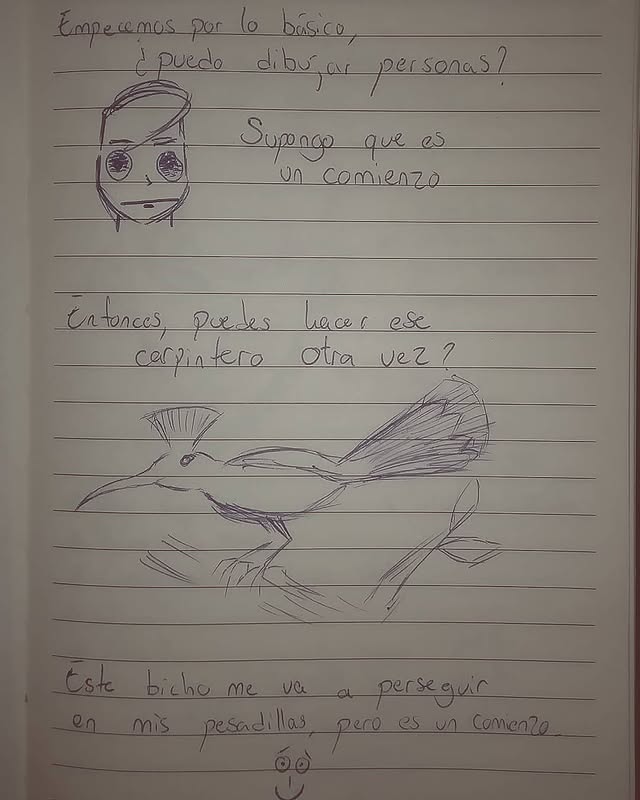
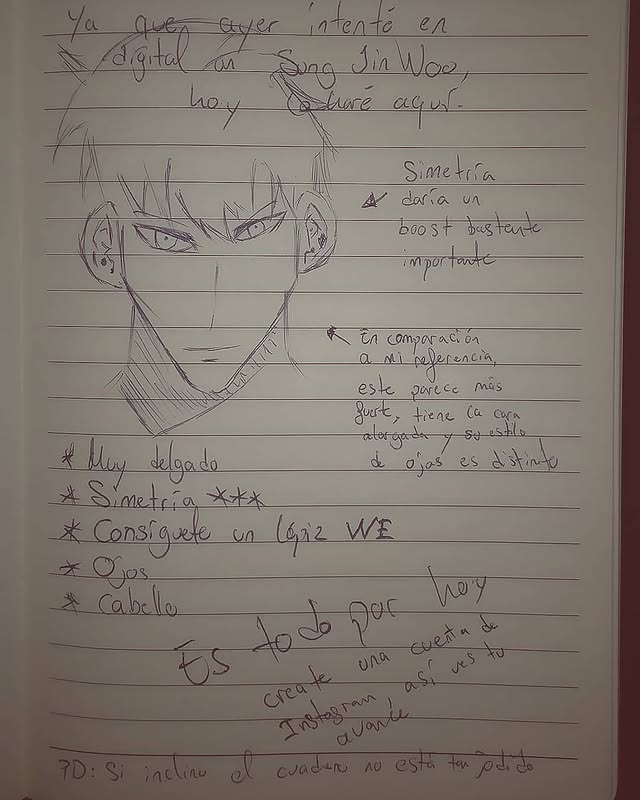
I hadn't ever questioned what a bird's legs looked like, what a face actually looks like (even though it feels weird, you don't know the exact coordinates of elements in a face), and the overall position of parts of the body. Also, even though you feel when something is wrong, back and forward still takes a huge amount of time.
But this is where I started. I knew what I lacked: Symmetry. And I tried to ignore it by not using it.
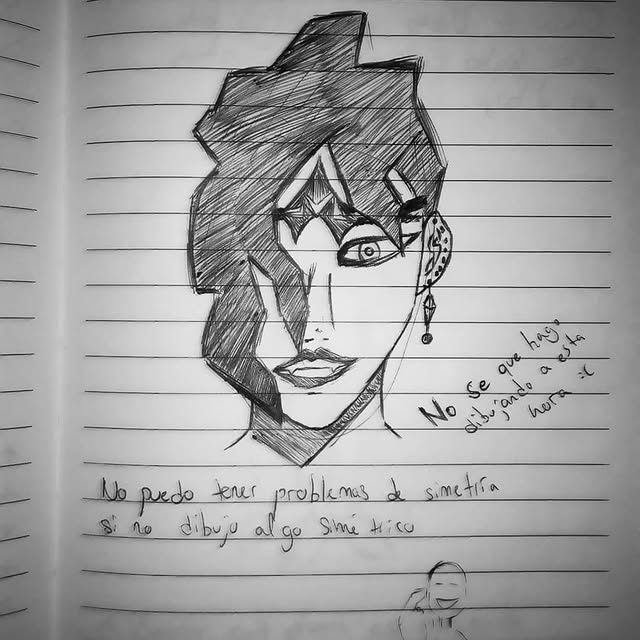
Day 21-40: The Anatomy Deep Dive
Now, the next thing I did was, as recommended by YouTube, anatomy. Which was weird to say the least. I now understand one complaint from my artist friends who feel like "medieval gravediggers, getting corpses in secret for research purposes".
I was looking at "anatomy" TRULY for research purposes, and that investigation was mostly mannequins. Probably the most remarkable realization was understanding how parts of the body actually work in 3D space and give shape to the cloth.
When I started being able to draw an acceptable enough body in about 20 minutes, I jumped to the next level.
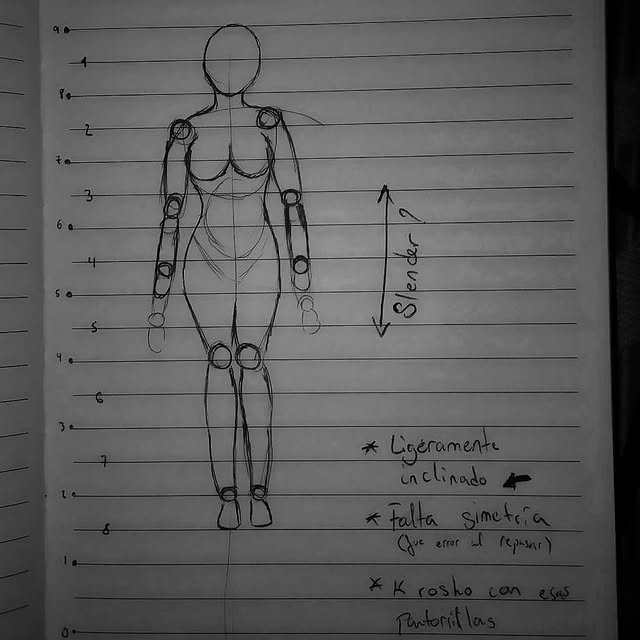
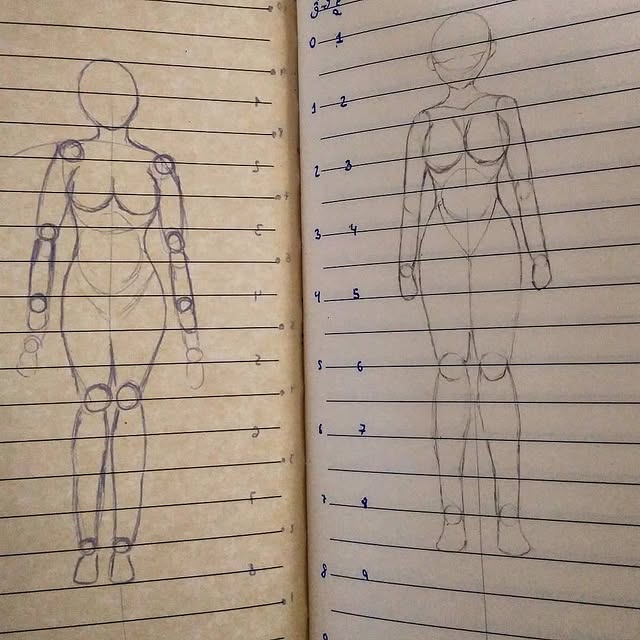
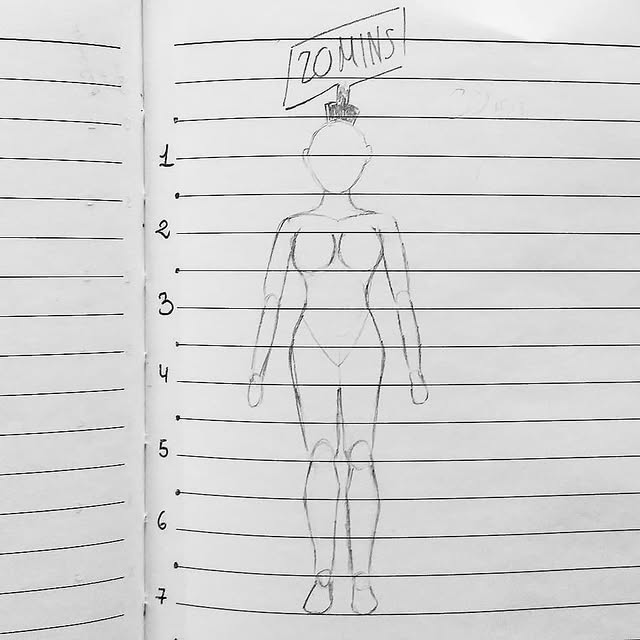
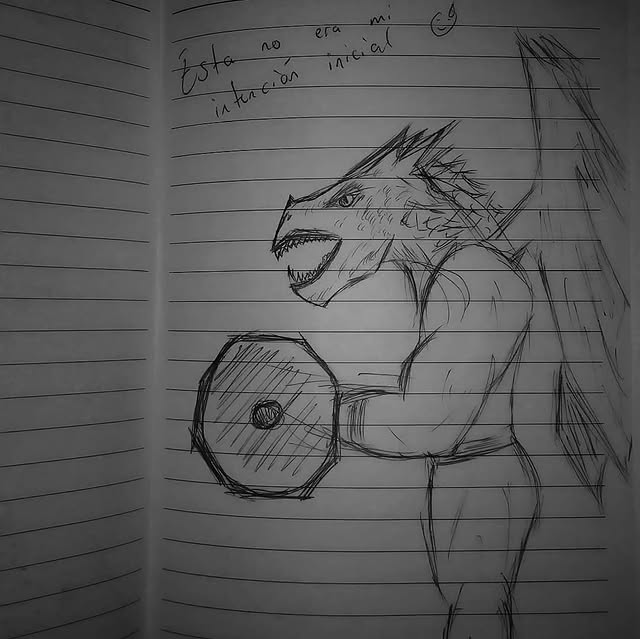
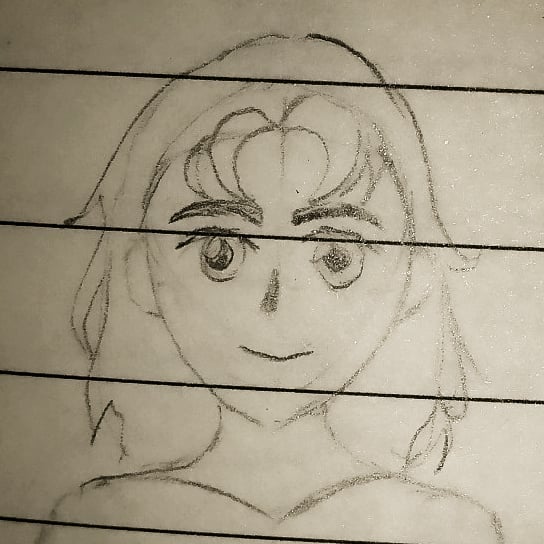
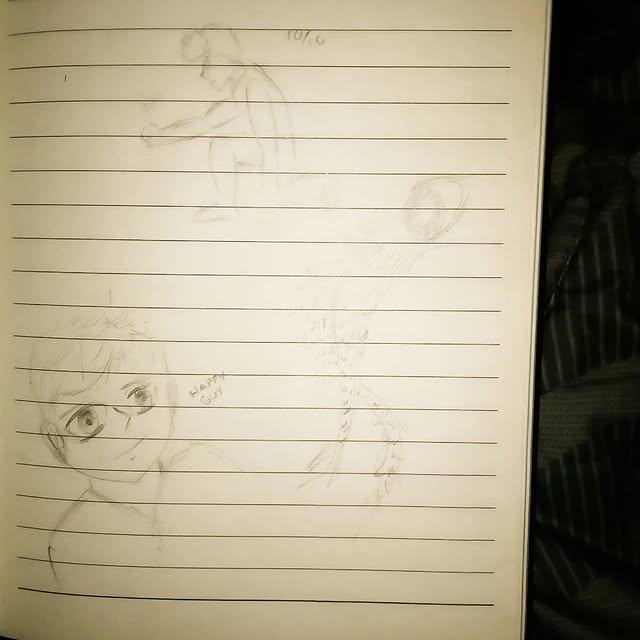
Day 41-60: Going Digital (With a Mouse!)
Time to turn on the computer. Time for digital art, I said. "If the main issue is going back and forward, ergo, erasing, then it should be easier on a computer."
What I didn't realize was that we need to keep the line amount short, and how much I was over-relying on those thick lines to fake skill. Now, in a simplistic one-line tracing on a computer, it felt meh, devoid of substance. Lifeless.
But it got a little better once I started to use brushes. No skill or ego still, just playing around.
Good thing is that you can always just stretch the drawings when vertical proportions are off. Which happens a lot when you're looking at a drawing or a screen at an angle. (Don't judge me, we've all done it.)
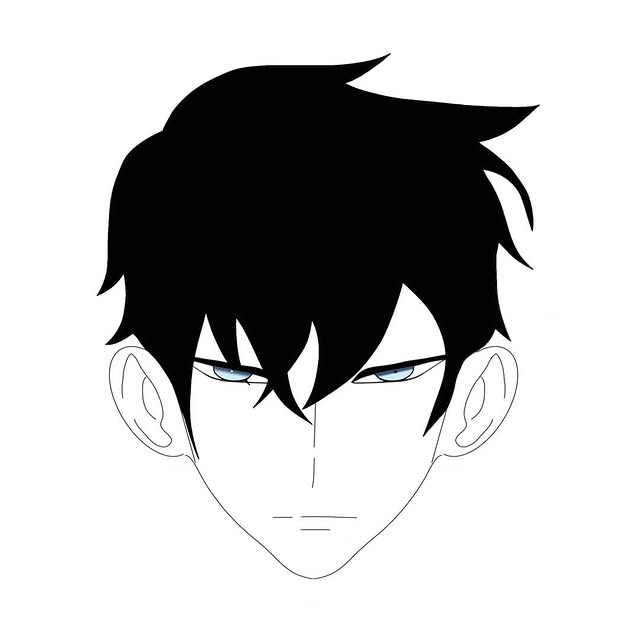
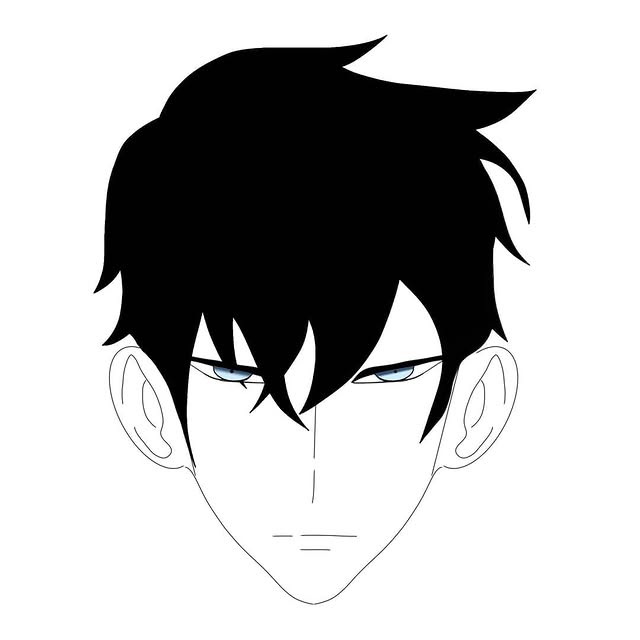
The Airbrush Disaster Phase
The problem was: I discovered airbrush. And although it's an essential tool, it didn't let me explore around with shapes and strokes, making everything look uncannily smooth. And that's when I came across the problem I called "the 360p effect".
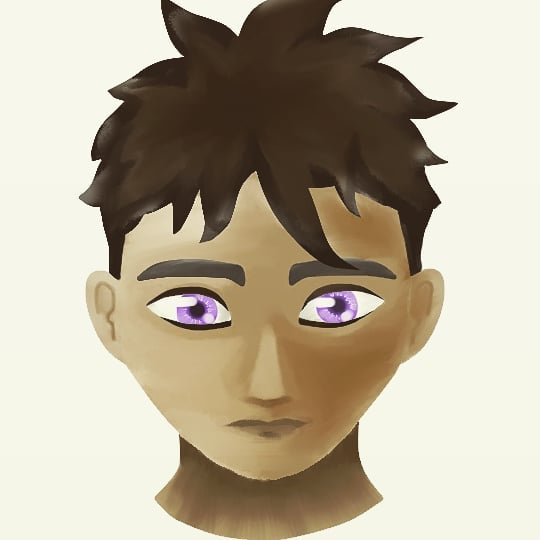
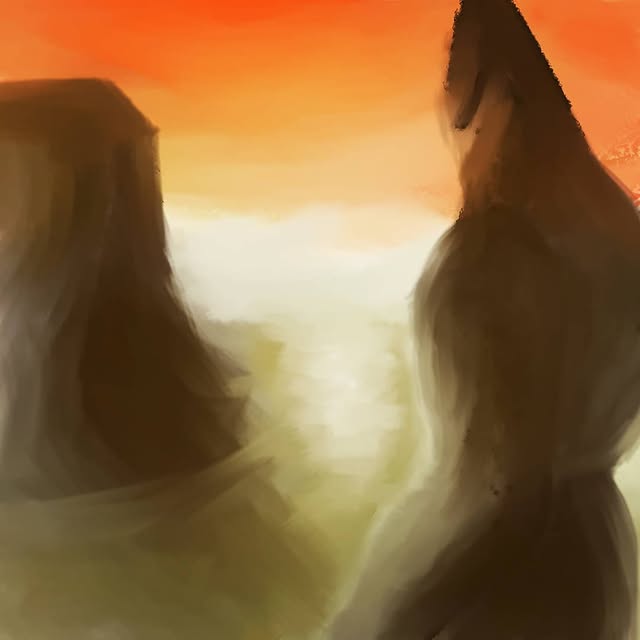
I moved around and tried to experiment with a few things, like heavy light contrast and the effects of illumination on water and terrain. But it wasn't looking as good as expected—everything had this "washed out" feeling.
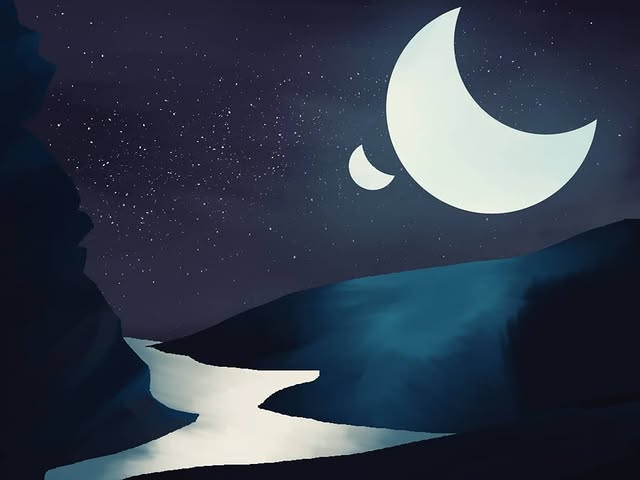
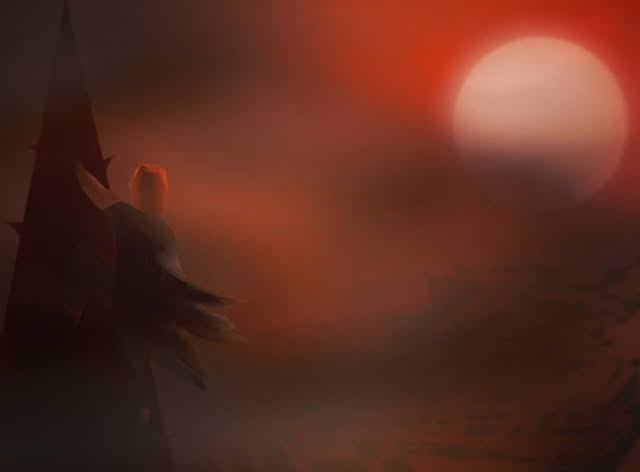
Day 61-80: Finding My Edge
After a while, I caught on to what I was doing wrong and started progressively adding some "edge" to the shapes, adding heavy delimitations where object boundaries were. I started progressively using less and less of the airbrush tool.
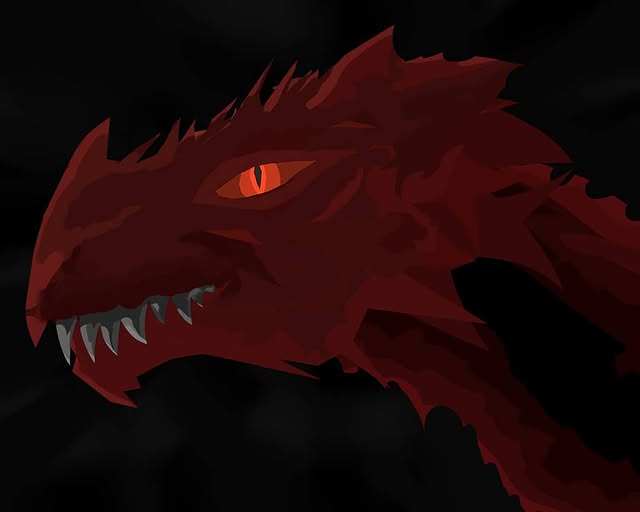
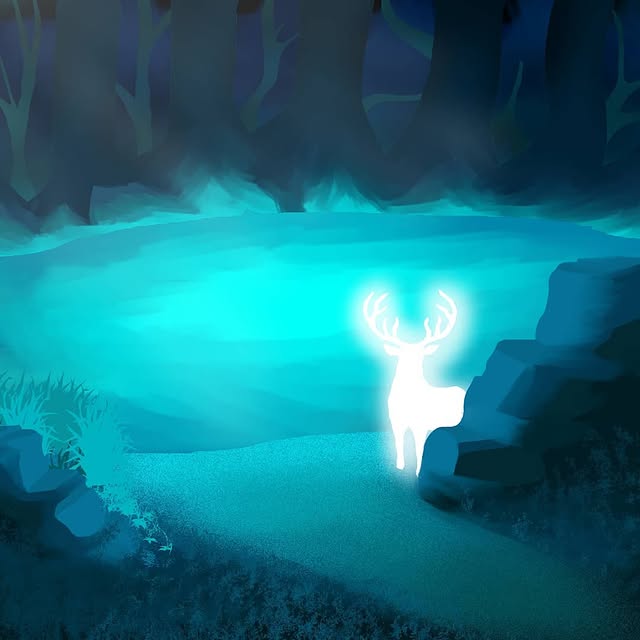
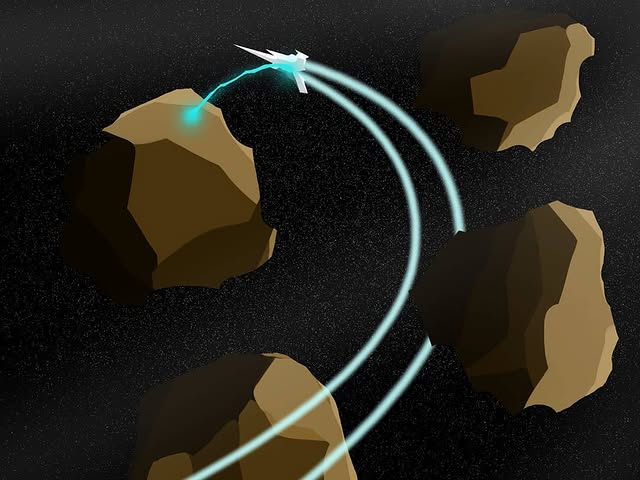
Then I realized part of my issue was in the shading and the actual scenic presence of light—what was conveyed through it, and also, the level of detail displayed in the art.
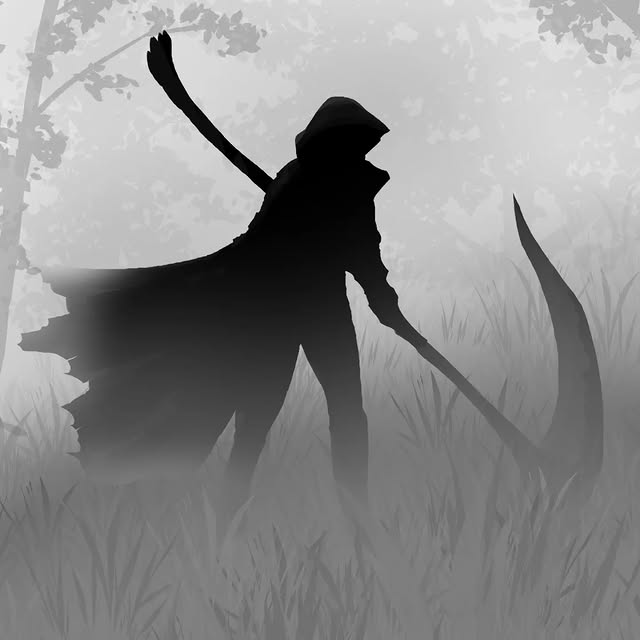
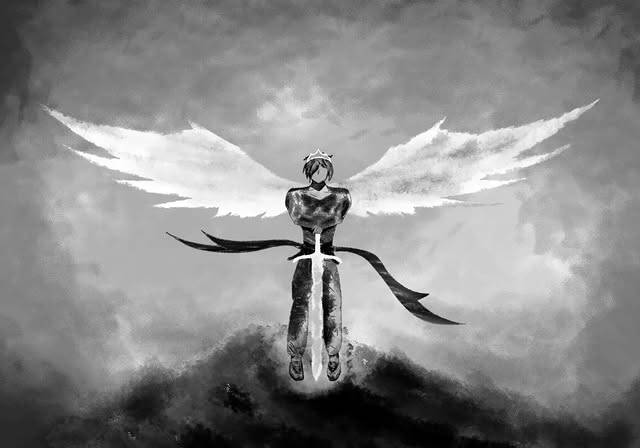
Day 81-100: The Tablet Revolution
Then... I finally bought a tablet. Until now, I was drawing with a mouse.
Which I might say, I'm rather good at because of being a very good aim in video games—500 hours of aim training and all, without considering actual FPS game time. Which means tracing with a mouse was a piece of cake, and all bad drawings are pure skill issues, not equipment related.
Let me say... that tablet was a game changer. I peaked here with these two drawings.
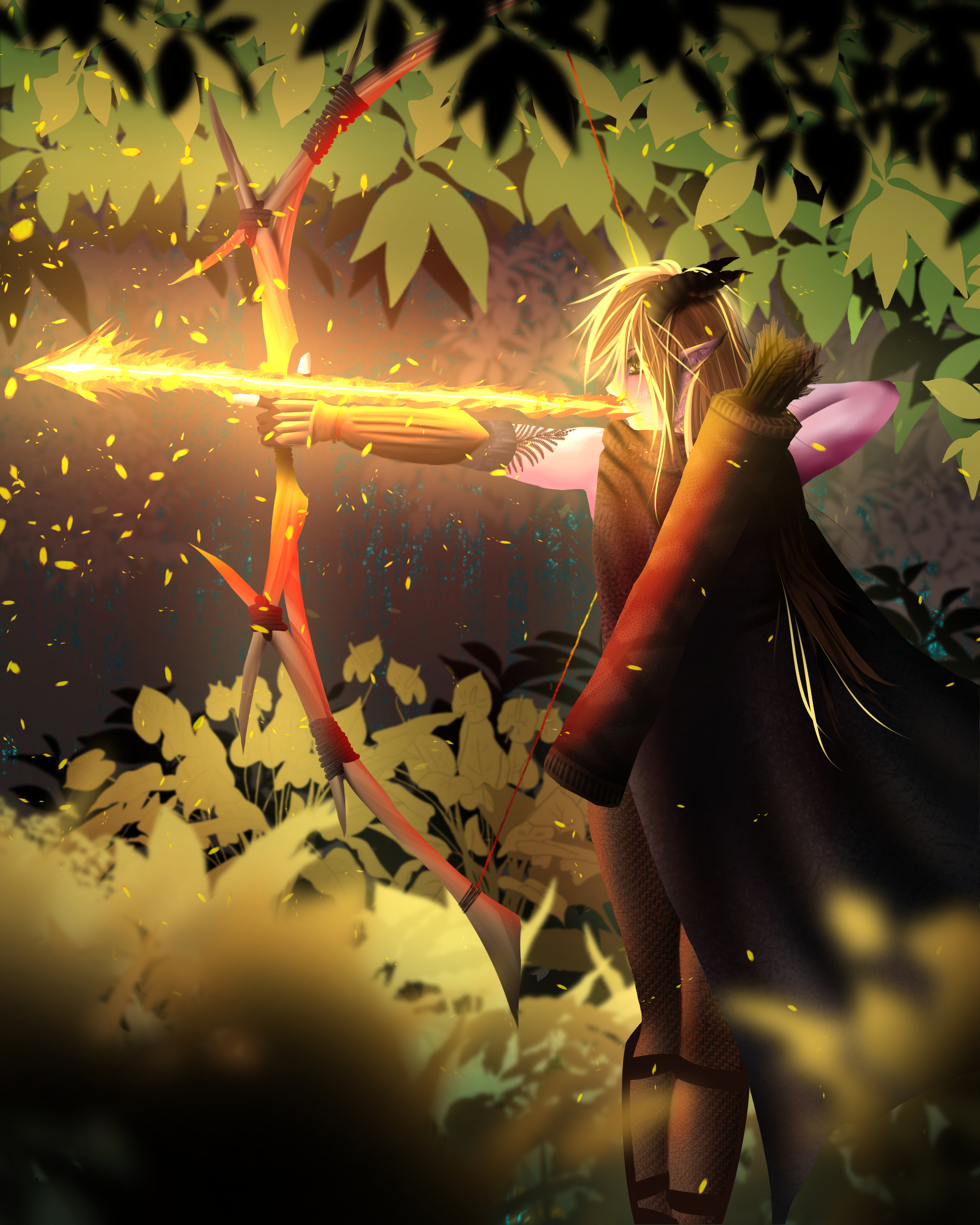
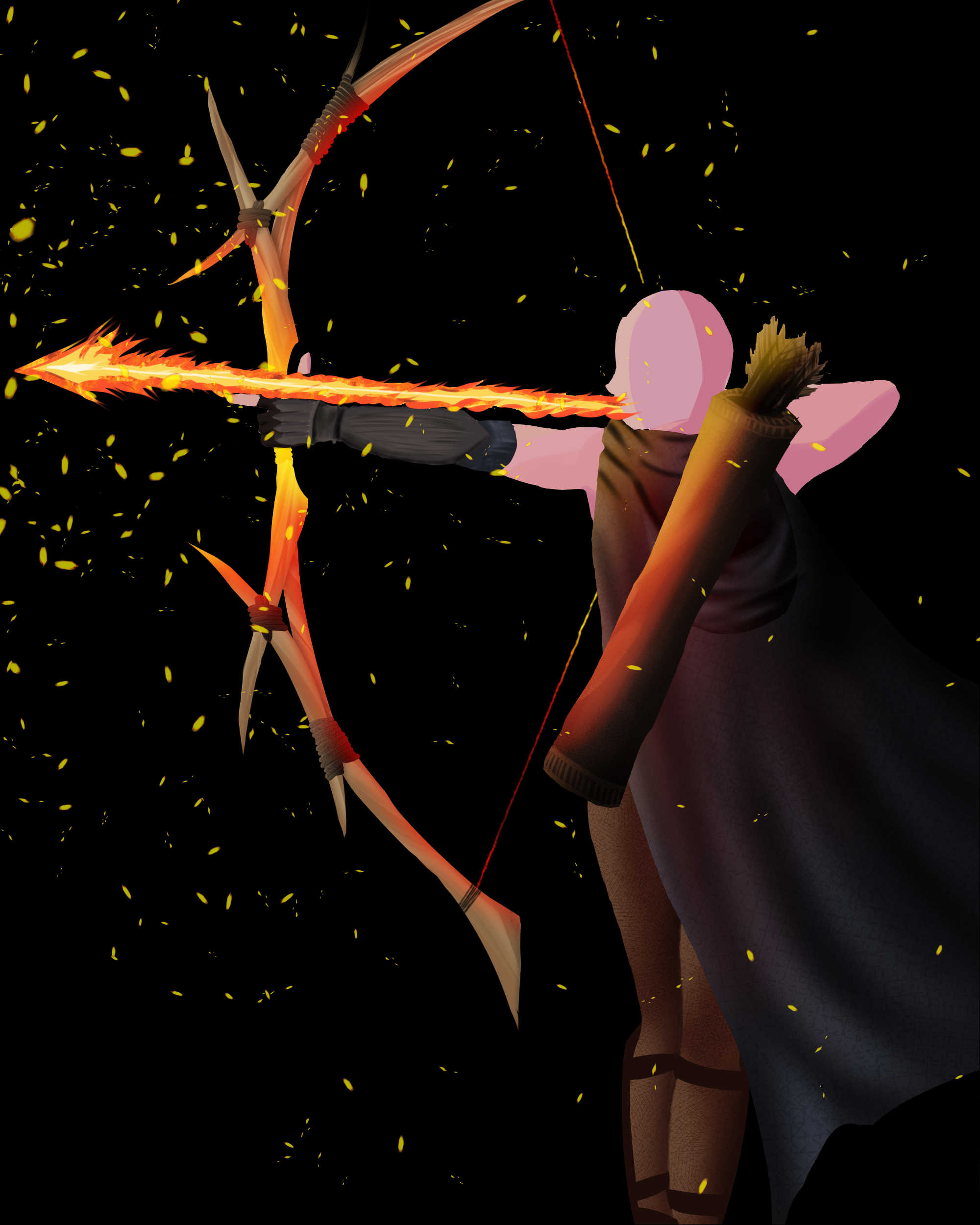
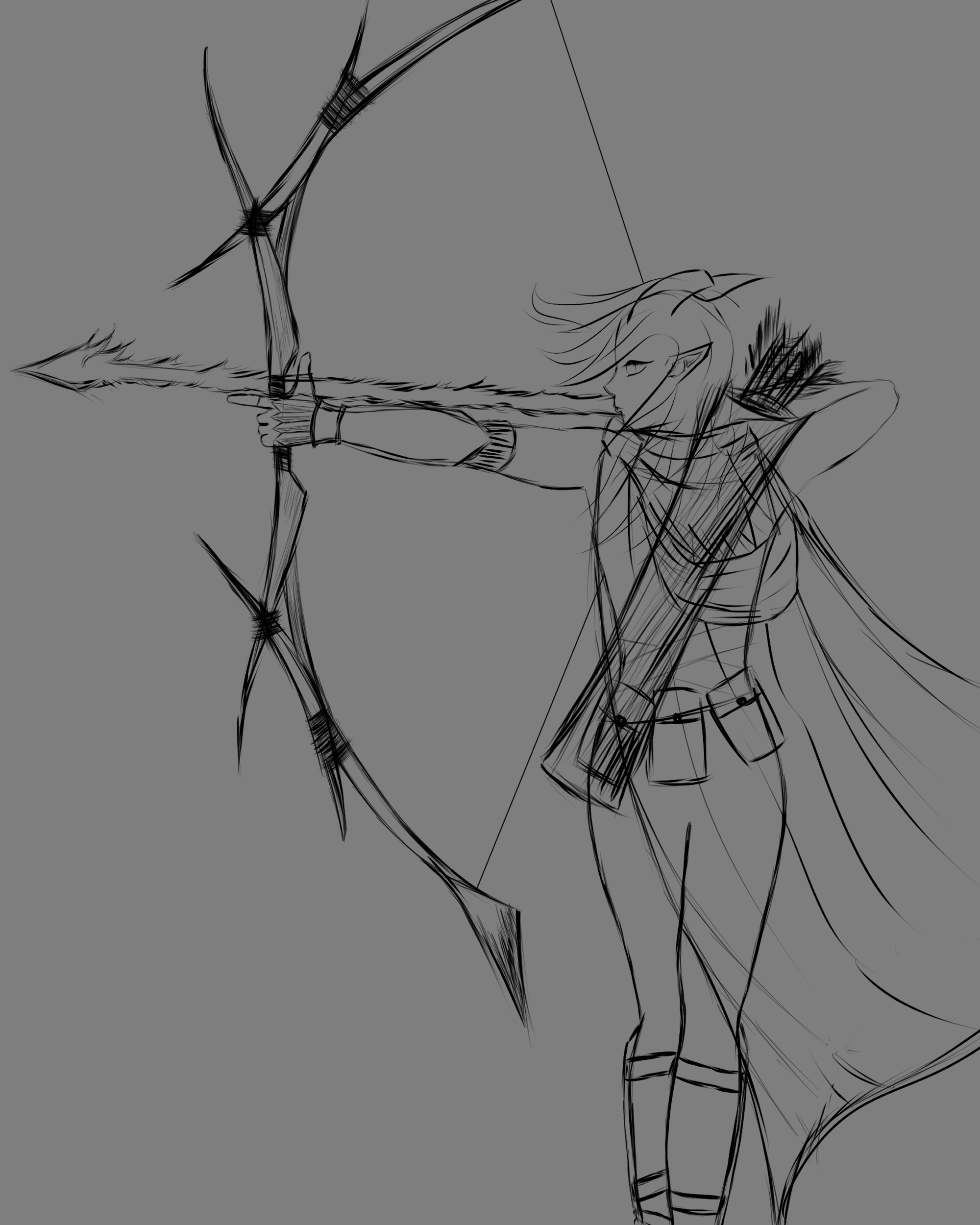
One was from a D&D campaign, which I felt really proud of. It took me 3 weeks (I spent a whole 2 days on that bow alone) and conveyed perfectly all the physics and skills I had been learning until now (except, obviously, how a bow works, but let's just call it magic). Fire could've been done better, now that I see it, but hey, it was good compared to what I used to do.
And finally, the last drawing I ever published, and I haven't been able to improve above this (mainly because I haven't tried).
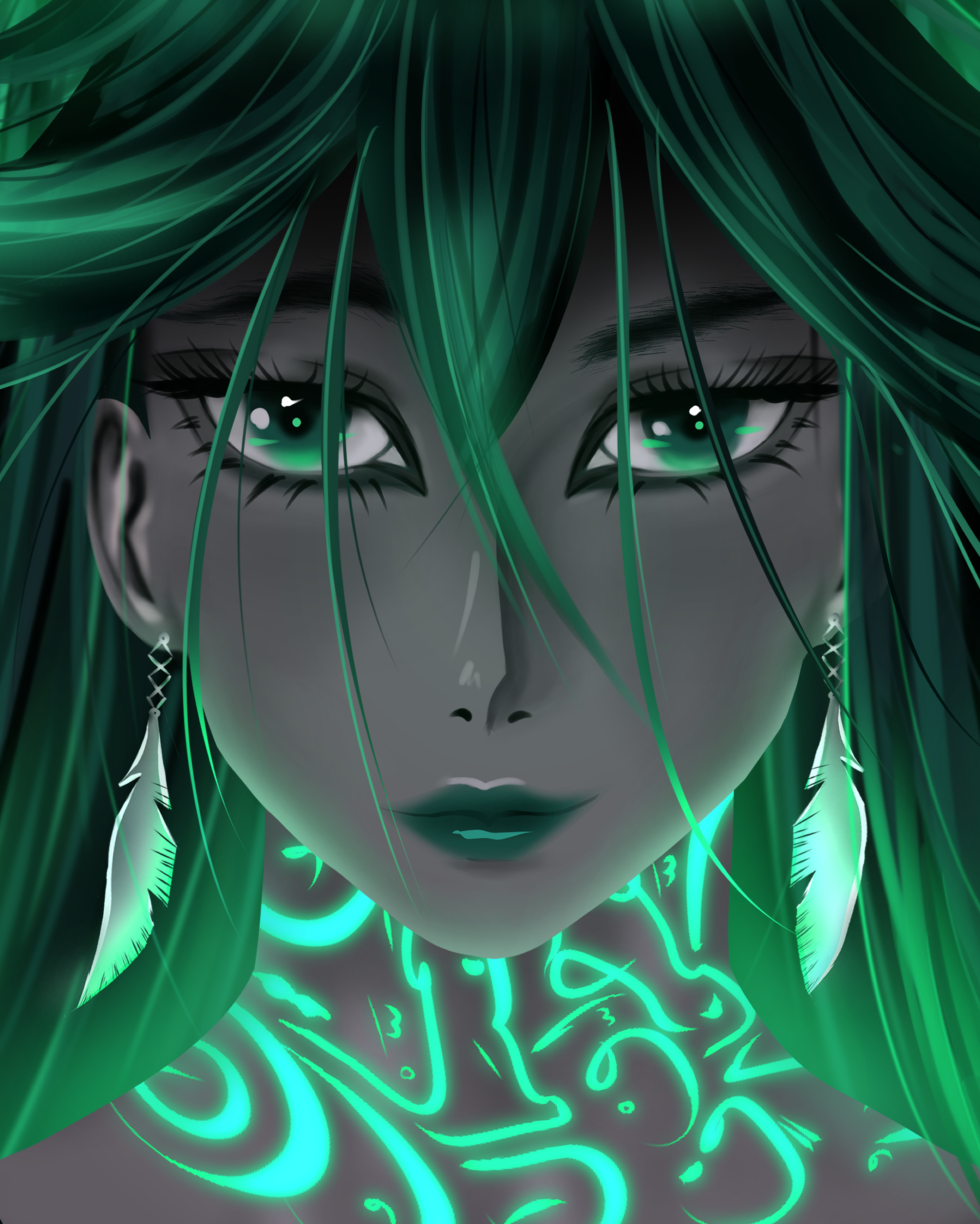
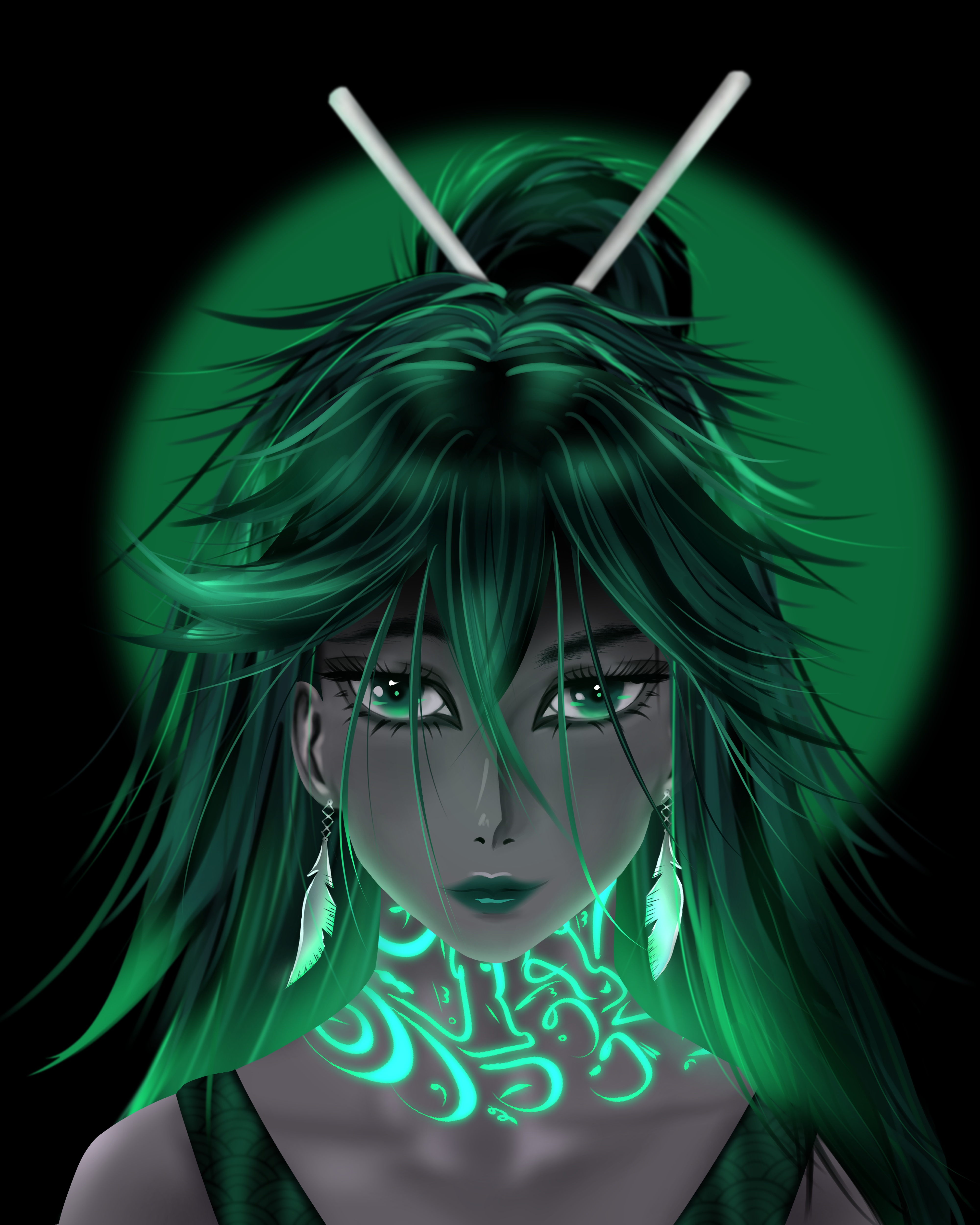
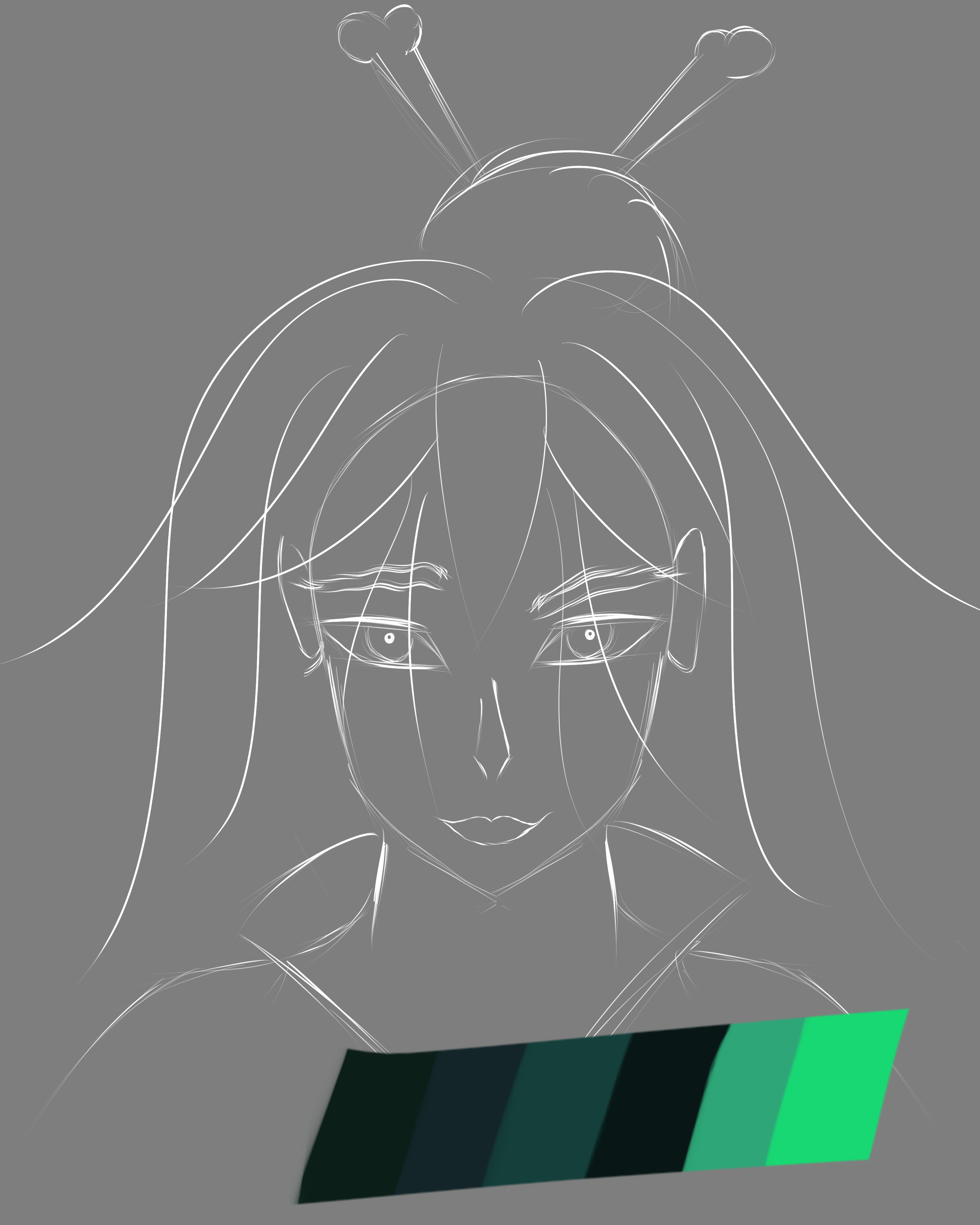
This final piece was actually pretty simple—most facial features in the style I went for are actually straightforward light reflections and some shading. I felt pretty great about the face, not much about the rest, so I usually crop it so it doesn't look "incomplete".
But I still think it looks cool, though it could have been improved with a better setting, some face angle (3/4), better background. More dynamism... A lot of things, but what can I say, I'm just a noob.
What I Learned From 100 Days of Drawing
But now I know enough about art to keep moving forward if I want to. And that's the real victory here. Let me break down the key lessons from this journey:
List Container
Fear of being bad kills more artists than lack of talent ever will
Knowing WHY something looks wrong is more valuable than knowing how to do it right
Equipment matters, but not as much as you think (I drew with a mouse for 80 days!)
The "360p effect" is real—avoid over-relying on soft brushes
Reference is everything—you don't know what things actually look like
Progress isn't linear—some days you'll create garbage, and that's okay
Try it yourself. You might find something along the way. Something that keeps you moving and expands your perception. You'll never reach the peak, so all a person can do is keep moving forward.
Start today. Pick up that pencil, open that drawing app, or dust off that old tablet. Your 100-day journey begins with day one. And trust me—future you will thank present you for starting.
What's your creative journey been like? Drop a comment below and let's talk about the struggles, the breakthroughs, and everything in between. Because if there's one thing I've learned, it's that we're all just figuring it out as we go.
Pablo Dominguez
Full Stack Developer passionate about building interesting projects and learning new skills.